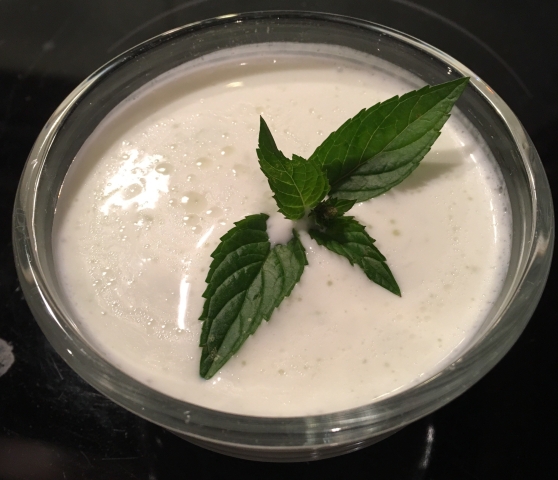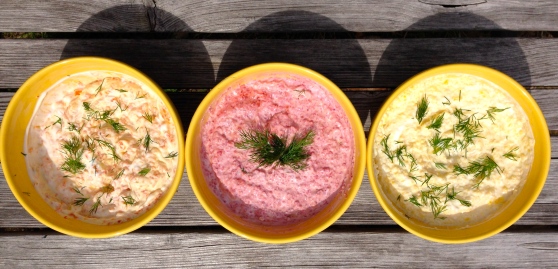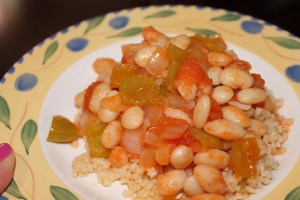In May of 2006, my in-laws took us on a road trip from Ankara to the Aegean. The morning of departure was beautiful – warm, cloudless, dry…and far away from the realities of my infertility waiting for me back home in New York.
My brother-in-law bid us farewell and hurled the contents of his Hacettepe University water bottle at the car as we were leaving. It’s customary in Turkey to splash water on a car embarking on a trip to wish a speedy return, like the ebb and flow of a tide. And while typical to use a bucket – an instance in which more is better, or, at least more accurate to this example – his choice of vessel demonstrated his modernized, waste-not urban take on the tradition.
For the first couple of hours, the car window framed a rocky, semi-arid Anatolian terrain. On the stereo, Turkish/Arab hip-hop belly-dancing from an old cassette tape blasted over the soft roar from the open windows. “These are Tolga’s favorites,” his father shared with an inaccurate paternal pride. The conversation then segued into why my husband wouldn’t shave his beard, why wouldn’t we consider buying a summer place in Turkey to be closer to the family who, of course, weren’t getting any younger (insert whatever medical test results his parents received the week before…), and then shifted to a bride – any bride – for Tolga’s happily-single younger brother. A few minutes later, a small herd of sheep waddled across the road, and Anne (mother) began poking Baba (father) to slow down. “Yavas, Oktay! YAAAAHVAAAHSH!!!” (slow, Oktay, slow) My father-in-law, who was already exceedingly cautious and uncomfortable behind the wheel, having had a government chauffeur for most of his working days, and, otherwise, a car without power steering, narrowly escaped a ditch on the side of the road.
We stopped to refuel – a couple of ounces of Turkish tea. Blazing sun cast an amber glow through prismed Turkish tea glasses nestled in small gold-painted porcelain plates, and warm proprietors served us in the traditional hospitality for which this country is known. Smiles beckoning us to linger, they offered pieces of sweet lokum, or Turkish delights, made with carrot and coconut, as a welcome gesture for the family with the touring American, who, glancing at her watch and counting the New York minutes, seemed to not quite grasp the concept of vacation. A quick stretch at a Garden State Parkway rest-stop with a Starbucks latte seemed to me a more suitable way to layover and not lose time…but it was early in the vacation, and I hadn’t yet understood that I wasn’t losing anything at all.
Almost to Marmaris, in a daring gesture that tried my road-trip-patience, my husband detoured to Aphrodisias, an archaeological site southeast of Izmir, which was not on our prescribed agenda and would take us at least two hours out of our way. He grinned at me and turned off the main road toward the ancient city.
 Baba, assuming his position as appointed tour guide and master of Turkish history, art, and architecture (and making up whatever he couldn’t conjure from memory…), shared details in his broken English about the site and its significance. But his voice faded into the background as we came upon a towering structure – a tetrapylon, a magnificent gateway into the ancient town in front of the Temple of Aphrodite. Evidently, it survived multiple earthquakes, including ones from the 4th century and the 7th century. The stone archway, stationary and steadfast, seemed also alive in a magnificent, upward stretch. On the ground, tiny purple flowers burst through the stone cracks of amazingly preserved intricate etchings, juxtaposing possibility amidst the harshest of conditions. This was going to be my sign. And I’m not about signs or fated moments. I’m pragmatic, task-oriented, even slightly cynical in deep-down places. But this was going to be the symbol of something transformative, something that is created, regardless of situation or environment or innate ability. And Aphrodite was going to be my patron goddess of fertility.
Baba, assuming his position as appointed tour guide and master of Turkish history, art, and architecture (and making up whatever he couldn’t conjure from memory…), shared details in his broken English about the site and its significance. But his voice faded into the background as we came upon a towering structure – a tetrapylon, a magnificent gateway into the ancient town in front of the Temple of Aphrodite. Evidently, it survived multiple earthquakes, including ones from the 4th century and the 7th century. The stone archway, stationary and steadfast, seemed also alive in a magnificent, upward stretch. On the ground, tiny purple flowers burst through the stone cracks of amazingly preserved intricate etchings, juxtaposing possibility amidst the harshest of conditions. This was going to be my sign. And I’m not about signs or fated moments. I’m pragmatic, task-oriented, even slightly cynical in deep-down places. But this was going to be the symbol of something transformative, something that is created, regardless of situation or environment or innate ability. And Aphrodite was going to be my patron goddess of fertility.
 Anne found a place to sit under a large, green fig tree – larger than any I’d ever seen. Figs have always had a special place in my family. My mother’s family have shoots of a fig tree that came from my grandmother, who transported it down to the Jersey Shore from the Bronx, and before that, from Brooklyn (ostensibly, it may have come over from Italy during one of my great-grandfather’s many travels across the Atlantic, but, for lack of confirmation, we leave it as having originated in Brooklyn…). Fruits from the tree’s descendants are enjoyed by my family every September, so it was unusual to be in a place where they were ripening in May. The fig – in its abstract a symbol of fertility, and in its familiar a personal harvest ritual – was rolling around in my mind as I stroked the soft, furry leaf within reach. Aphrodite, a tremendous force for change, was beckoning me to inhale the air, drink in the soil and surroundings, and move beyond the fears and frustrations and evidence-based in-vitro success rates under which I’d been trapped for months.
Anne found a place to sit under a large, green fig tree – larger than any I’d ever seen. Figs have always had a special place in my family. My mother’s family have shoots of a fig tree that came from my grandmother, who transported it down to the Jersey Shore from the Bronx, and before that, from Brooklyn (ostensibly, it may have come over from Italy during one of my great-grandfather’s many travels across the Atlantic, but, for lack of confirmation, we leave it as having originated in Brooklyn…). Fruits from the tree’s descendants are enjoyed by my family every September, so it was unusual to be in a place where they were ripening in May. The fig – in its abstract a symbol of fertility, and in its familiar a personal harvest ritual – was rolling around in my mind as I stroked the soft, furry leaf within reach. Aphrodite, a tremendous force for change, was beckoning me to inhale the air, drink in the soil and surroundings, and move beyond the fears and frustrations and evidence-based in-vitro success rates under which I’d been trapped for months.
At the time, I still didn’t know if I’d ever be able to have a baby, but in that moment, intoxicated by some semblance of a Dionysian and ancestral sensory overload, I felt myself surrendering…giving up a tight grip on how my life was going to unfold. Can figs and ancient temples do all that? Well, I find that surrendering is helped along in no small part by something called incir tatLIsI (fig sweet or dessert)…and a ton of whipped cream… 
Ingredients:
- 2 cups of dried Turkish figs (fresh figs work *beautifully*, too, and require less water, if you can get them)
- 1 cup water
- 1 cup chopped walnuts and hazelnuts
- ½ cup sugar
- ¼ tsp cinnamon
- fresh lemon juice
Instructions:
- Simmer figs in water for 20 minutes, drain water, let cool
- Chop nuts – however you wish! (This recipe originally came to me with a 20-minute debate on the best way to chop nuts: Baba painstakingly sliced each nut by hand citing nebulous Turkish elders as his authority, Anne secured them in a zip-lock bag on the counter and then whacked them with a ladle on the kitchen counter…all with a little too much pleasure, I might add…and, then, being a geek with kitchen gadgets, I took out my trusty food processor to loosely grind them on a low speed)
- In a bowl, mix the nuts, half the sugar, and cinnamon
- Take each fig and gently remove the stem tip with a sharp knife; the figs will be fragile, so proceed slowly
- Stuff the figs with the mixture
- Place into a wide saucepan, aligning them like cozy relatives, until the pan is full, then add ¼ cup water and the remaining sugar and squeeze fresh lemon juice over the lot before covering and placing back on the stove over medium heat for 15 minutes.
- Enjoy with whipped cream







 My kid didn’t sleep through the night until she was three…years…old. Sounds somewhat amusing, but, for anyone who has ever experienced similar long-term sleep deprivation, this is far from funny. Losing one’s cell phone because it’s in the fridge next to the cheddar cheese (what, isn’t that where you keep yours?), pouring orange juice into morning coffee, walking into walls, bursting into tears when the local pizzeria is out of fresh garlic topping, because, let’s face it, no one’s putting mercimek in the oven that night anyway (the lens of exhaustion makes one’s mild-mannered husband resemble the antichrist), and, oh, the blunder to end all sleep-deprived blunders: calling your boss, “mom” – all of these require some years and some distance to conjure an appropriate chuckle. For these, and countless other “finest” moments, a Turkish coffee gets the job done.
My kid didn’t sleep through the night until she was three…years…old. Sounds somewhat amusing, but, for anyone who has ever experienced similar long-term sleep deprivation, this is far from funny. Losing one’s cell phone because it’s in the fridge next to the cheddar cheese (what, isn’t that where you keep yours?), pouring orange juice into morning coffee, walking into walls, bursting into tears when the local pizzeria is out of fresh garlic topping, because, let’s face it, no one’s putting mercimek in the oven that night anyway (the lens of exhaustion makes one’s mild-mannered husband resemble the antichrist), and, oh, the blunder to end all sleep-deprived blunders: calling your boss, “mom” – all of these require some years and some distance to conjure an appropriate chuckle. For these, and countless other “finest” moments, a Turkish coffee gets the job done. I throw everything to be chopped into a food processor because I’m lazy and a little clumsy when it comes to chopping, but Anne insists it’s better to chop otherwise the juices come out in the food processor instead of the pan. (NOTE: my daughter’s knife is a child’s knife…never put a sharp blade into the hand of a tiny person…although one could say the same for me…)
I throw everything to be chopped into a food processor because I’m lazy and a little clumsy when it comes to chopping, but Anne insists it’s better to chop otherwise the juices come out in the food processor instead of the pan. (NOTE: my daughter’s knife is a child’s knife…never put a sharp blade into the hand of a tiny person…although one could say the same for me…)





